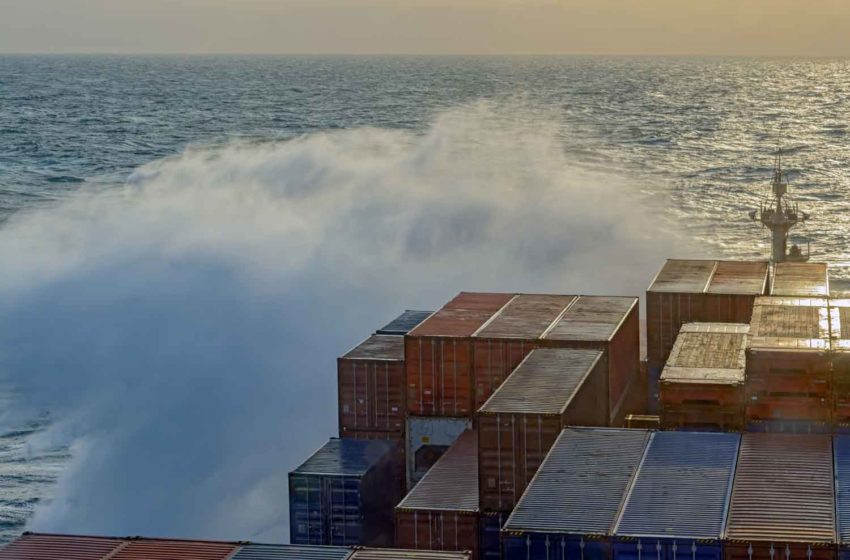Choppy Waters
- Also in TR Logistics Print Edition
- January 1, 2023
- 0
- 6 minutes read


As the Covid pandemic ebbs, the tobacco shipping business faces new challenges in 2023.
By Stefanie Rossel
At the beginning of last year, forwarding businesses that specialized in the shipping and storage of tobacco were groaning under the burden Covid-19 had placed on their operations. The pandemic had severely disrupted the global supply chain, causing shortages of containers in places where they were needed and surpluses in places that had no use for them.
As economic movements and production came to a halt, large numbers of containers accumulated in North America. In order to control costs, carriers lowered the number of vessels at sea, slowing imports and exports as empty containers were no longer picked up. When Covid eased and Asian traders became the first to resume business, retrieving containers turned out to be challenge. A reduction in container production during the pandemic, raw material shortages and Covid-related port closures contributed to the crisis, resulting in significant delays in turnaround times and an unprecedented increase in the costs of transporting goods by container ship.
Since the beginning of 2020, shipping rates had risen between five times and seven times over the initial freight rates depending on the route. The price of shipping cargo to the U.S., for instance, increased 530 percent since the start of 2021.
The good news is that toward the end of 2022, scarcity of containers was no longer an issue; on the contrary: global container depots, where empty containers are stored, are now filling up or are full. Freight rates have fallen accordingly. According to the December 2022 Drewry World Container Index, the average rate of a 40-foot container has dropped to $2,139, which is 79 percent below the peak of $10,377 reached in September 2021.
The falling prices should provide freight forwarders room to negotiate better rates with shipping lines in 2023, experts say, but margins for forwarders will also be tighter as they operate in a market that is anticipated to consolidate. They will have to optimize operational cost and carefully monitor demurrage and detention charges, such as insurance charges or claims, according to industry watchers.
Slowing Trade
In general, however, supply chain concerns are expected to persist in 2023 as new issues have come up. ING Think, the economic and financial analysis arm of ING Research, believes that the new year could prove to be even more challenging for global goods trade due to faltering consumer demand, returning oversupply and the mounting cost of energy as a result of the war in Ukraine. More than 80 percent of world trade is seaborne.
While major ports, such as Los Angeles-Long Beach and Shanghai, have managed to work off the backlogs caused by the pandemic, global congestion of ports is far from over, analysts point out. Shipping times may have improved since their peak at the beginning of 2022, but they still amount to approximately double the pre-pandemic lead times of 80 days to 90 days. According to Sea Intelligence, schedule reliability stood at 46.2 percent in August, which is trending upward but still significantly lower than the 2018–2019 average of 74 percent. Some 7 percent of the global fleet, ING Think says, is still stuck in queues in ports around the world, and 11 percent of goods are sitting on waiting container ships.
For 2023, analysts predict the moderation in the transportation sector to continue in light of recession scenarios and hesitant consumer demand. With energy prices expected to remain high, purchasing power continuing to erode and manufacturers struggling with labor and material shortages, ING Think forecasts that receding demand will meet oversupply. While trade in consumer products is expected to remain below growth average, decreasing new export orders and declining order books also indicate a slowdown on the industrial side, with Europe being hit particularly hard by the energy crisis.
With minimal Russian gas flows, the 2023–2024 winter season will likely make it more difficult to build inventories. Further sanctions on Russian oil and refined products are anticipated to lead to a shift in global trade patterns; on Dec. 5, 2022, the European Union and the U.K. banned the seaborne imports of crude oil from Russia; from Feb. 5., 2023, they will also embargo Russian oil product imports.
Labor shortages and material shortages will continue to challenge the transport sector in 2023. Strikes for higher wages and better working conditions took place in all parts of the world last year—a situation that could worsen with the war in Ukraine. At 10.5 percent and 4 percent, respectively, Russia and Ukraine supply significant shares of the world’s sailors. If Russia announces a full mobilization, the shortage of deckhands could intensify.
According to ING Think, 2023 will see enhanced capacity management of container liners, increasing operational costs and larger capital investments in new, more environmentally friendly vessels and more expensive compliant biofuels as well as in wages. Global supply chains are still fragile and exposed to volatility. As the analysts observe, “Normality is still way off as we approach 2023.”

